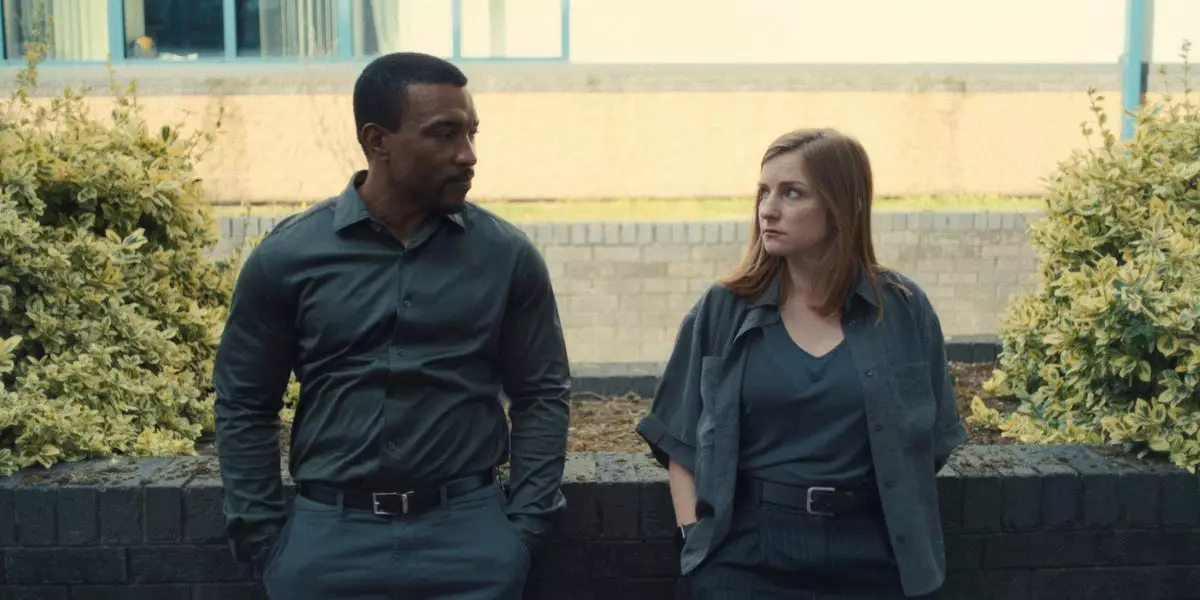The Netflix mini-series “Adolescence” has captured the hearts and minds of its audience, igniting conversations around its narrative choices, particularly in its second episode. Co-creator Stephen Graham, who also plays a pivotal role as Eddie, helped create an atmosphere thick with tension and emotional depth. However, what truly sets this episode apart is not just its gripping storyline but a crucial shift in filmmaking techniques that adds layers to the narrative. The decision to utilize aerial shots arrived from an unexpected suggestion from a Netflix executive, showcasing how collaboration can produce moments of cinematic brilliance.
Creative Tension in Execution
In an insightful discussion on The Rest Is Entertainment podcast, director Philip Barantini and director of photography Matt Lewis shared the behind-the-scenes intricacies of how this iconic scene unfolded. Initially planned as a street-level tracking shot, the decision to elevate the perspective was not without its challenges. The transition from a grounded viewpoint to an aerial shot was not merely an aesthetic choice but a strategic decision designed to enhance emotional resonance. This shift invites viewers to not only observe but to feel the significance of Eddie’s act of laying flowers at the murder site for the character Katie.
It’s fascinating to ponder what might have happened had they pursued the original plan. One can’t help but agree with Lewis when he said, “If it pays off, it’s amazing. If it doesn’t… we might not have had an episode.” This inherent risk embodies the essence of artistic endeavor. The weight of such responsibility lies heavy on the shoulders of filmmakers, but it’s this creative tension that ultimately drives better storytelling.
Technical Challenges and Triumphs
Lewis further detailed the technical hurdles faced during filming, particularly in accomplishing the drone’s descent in windy conditions. The challenge of maintaining control over a drone while simultaneously navigating unpredictability was no small feat. “There’s not a lot of room for changes,” he remarked, revealing the meticulous yet invigorating experience inherent to high-stakes filmmaking. The juxtaposition of emotional stakes—Eddie grieving over Katie’s loss—with the technical precision required to pull off the shot speaks volumes about the craft involved in making “Adolescence.”
Ultimately, the decision to go with the aerial shot turned out to be not just a moment of success but one filled with emotional release. Lewis’s reflection, “That’s when I cried,” is a powerful testament to how filmmaking transcends mere technical execution. It’s about tapping into the deeper human experience and capturing moments that resonate long after the screen fades to black.
A New Era of Collaborative Creative Vision
The anecdote behind this pivotal scene encourages an understanding of the collaborative spirit that epitomizes contemporary storytelling. Single authorship often gives way to a rich tapestry woven from diverse ideas and inputs, culminating in innovative storytelling. In this instance, a seemingly simple decision led to a profound emotional payoff, resonating strongly with the audience. “Adolescence” represents not just a thrilling narrative but a masterclass in dynamic filmmaking where every choice is influenced by collaborative grit and creative risks. Such moments redefine our expectations from television and invite us to venture deeper into the stories we consume.


Leave a Reply